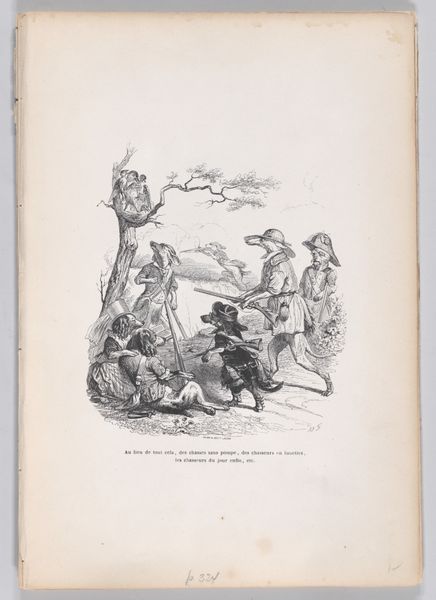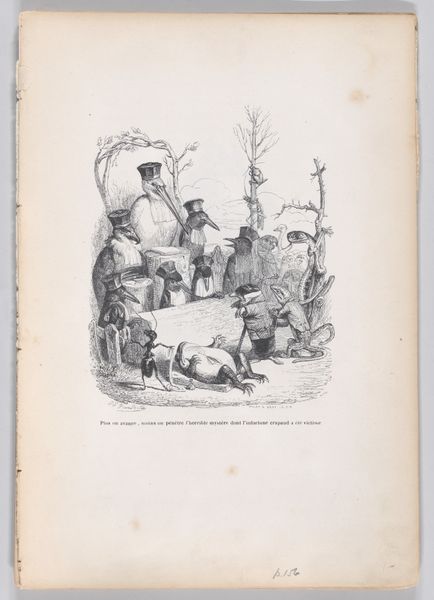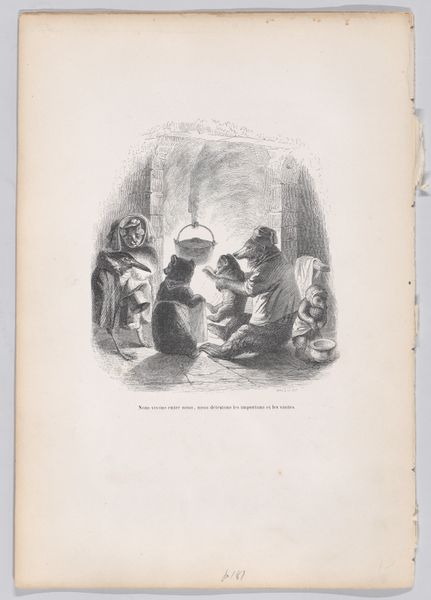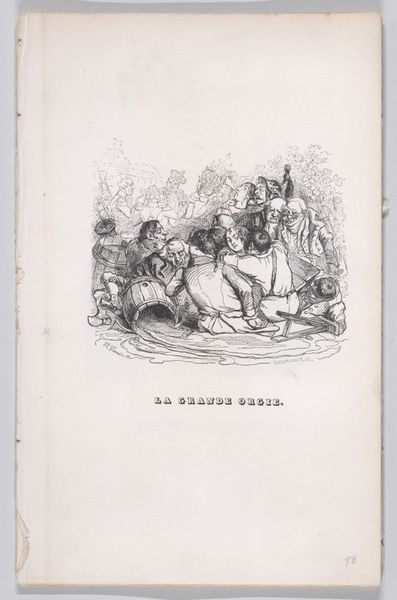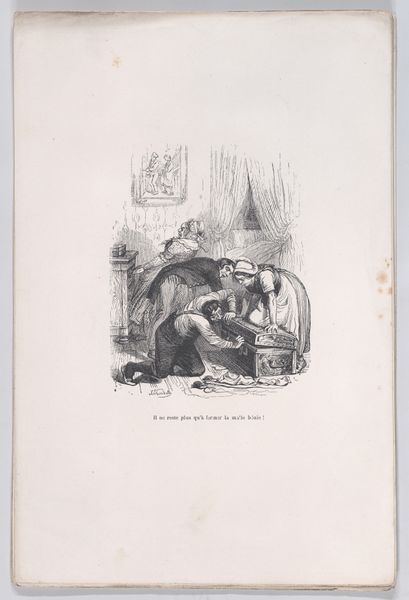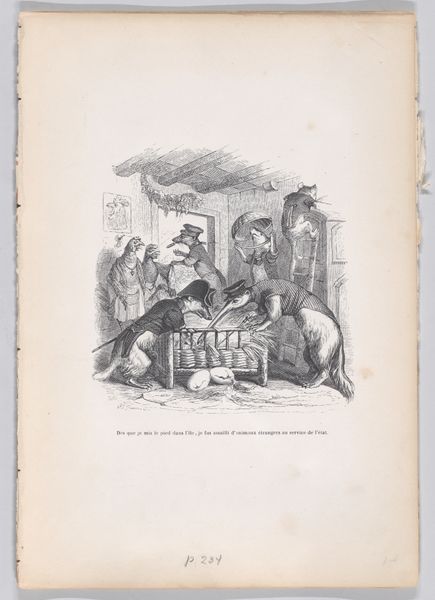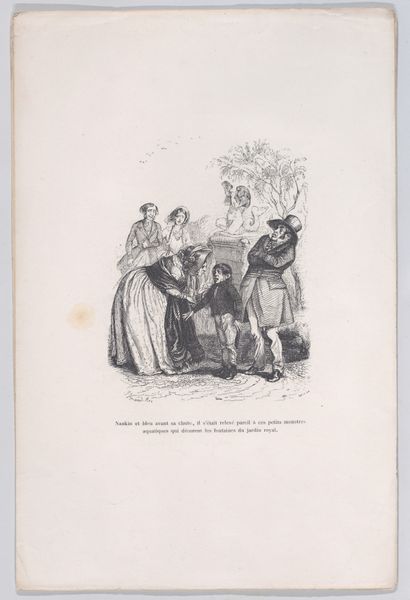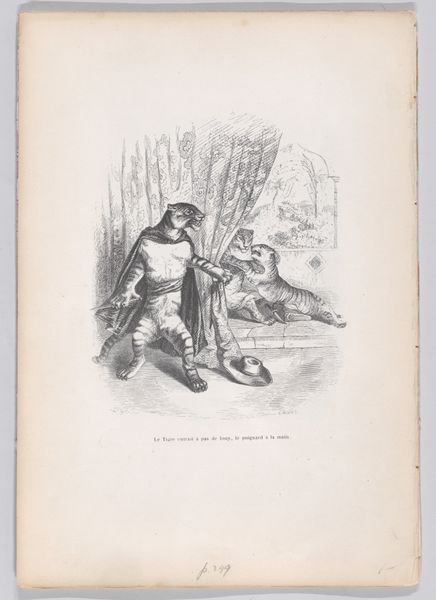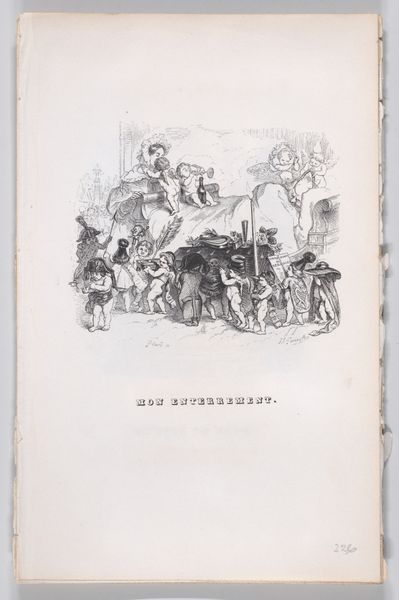
"I urged them to eat some boiled eggs" from Scenes from the Private and Public Life of Animals 1832 - 1852
0:00
0:00
drawing, lithograph, print, engraving
#
drawing
#
narrative-art
#
lithograph
# print
#
caricature
#
figuration
#
coloured pencil
#
engraving
Dimensions: Sheet: 10 5/16 × 7 3/16 in. (26.2 × 18.3 cm)
Copyright: Public Domain
Editor: Here we have J.J. Grandville's print, "I urged them to eat some boiled eggs" from Scenes from the Private and Public Life of Animals, created sometime between 1832 and 1852. The figures are anthropomorphic animals gathered around a boiling pot. It feels satirical, but what do you see in this piece? Curator: I see a pointed critique of social hierarchies and performative hospitality masked beneath this veneer of domesticity. The lithograph reveals the power dynamics inherent in seemingly innocuous social gatherings, perhaps commenting on the bourgeoisie of the time. Note the distinct attire of each animal, hinting at class distinctions and gender roles within this fabricated society. What power relationships do you see at play? Editor: Well, the rooster seems rather formally dressed, and the fox is actively cooking; so maybe a class difference? Do you think Grandville was using the animals to represent specific people or groups? Curator: Potentially, but it goes deeper than simple caricature. Grandville is using the animal form to amplify and distort human behaviors, making visible the often-unseen cruelties and absurdities of social rituals. The "invitation" to eat, within the title, even feels forced, which is an interesting contrast. Consider the era in which this was made; class tensions were building toward revolution, so Grandville offers us a glimpse of those tensions bubbling beneath the surface, mirroring the eggs in the pot. Editor: That's fascinating; I hadn't considered the forced nature of the invitation. So, it is less about who these animals *are*, and more about what they *represent*, in a broader socio-political context? Curator: Precisely. Grandville asks us to question the roles we play in our own social circles, exposing the uncomfortable truths often hidden behind polite gestures. The work is a call for societal introspection. Editor: I see that now. I had originally viewed it as just a funny scene, but recognizing its satirical layers makes it a far more powerful piece. Curator: Exactly. It is about the quiet power struggles within social gatherings.
Comments
No comments
Be the first to comment and join the conversation on the ultimate creative platform.
